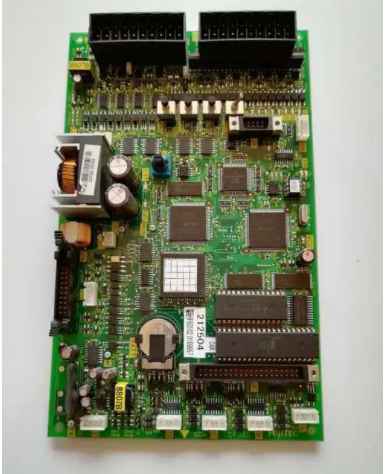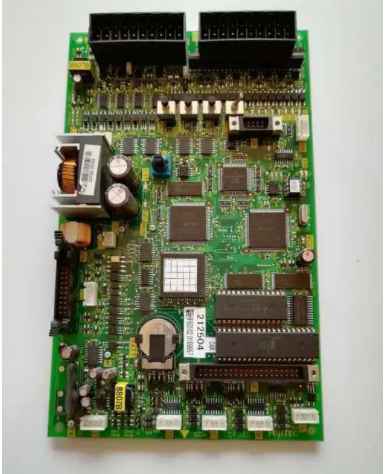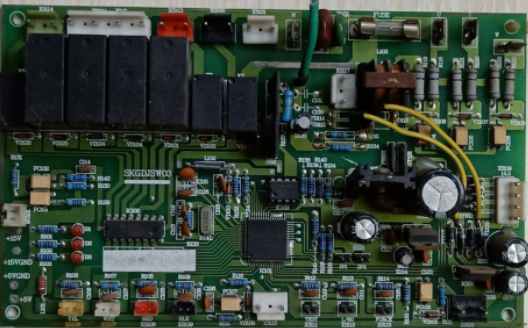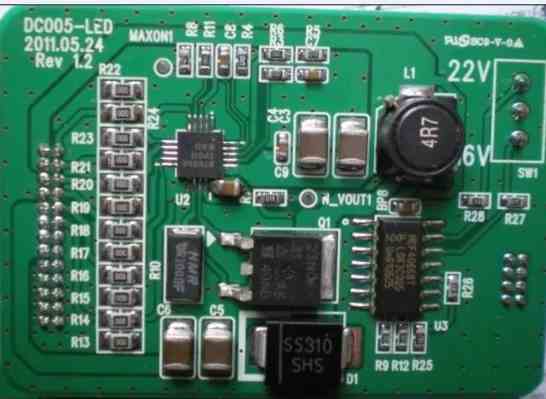
With the emergence of high-speed circuits, the complexity of the PCB board is also getting higher and higher, in order to avoid the interference of electrical factors, the signal layer and the power layer must be separated, so it involves the design of multi-layer PCB, that is, the design of the laminated structure.
Good laminated design can not only effectively improve power quality, reduce crosstalk and EMI, improve signal transmission performance, but also save costs and provide convenience for PCB design and wiring, which is the first consideration of any high-speed PCB designer.
1.In a multi-layer PCB, there is usually a signal layer (S), a power supply (P) plane and a ground (GND) plane. The power plane and the ground plane are usually undivided solid planes that will provide a good low-impedance current return path for the current from adjacent signal routes. Most of the signal layers are located between these power or ground reference plane layers, forming symmetric or asymmetric strip lines. The top and bottom layers of multi-layer PCBS are usually used to place components and a small amount of wiring, and these signal wiring requirements cannot be too long to reduce the direct radiation generated by the wiring.
2. Determine the single power reference plane (power plane)
The use of decoupling capacitors is an important measure to solve the integrity of the power supply. Decoupling capacitors can only be placed on the top and bottom layers of the PCB. The routing, pad, and hole of the decoupling capacitor will seriously affect the effect of the decoupling capacitor, which requires that the design must consider that the connecting line of the decoupling capacitor should be as short and wide as possible, and the wire connected to the hole should also be as short as possible. For example, in a high-speed digital circuit, the decoupling capacitor can be placed on the top layer of the PCB, the second layer is assigned to the high-speed digital circuit (such as the processor) as the power layer, the third layer as the signal layer, and the fourth layer is set as the high-speed digital circuit ground.
In addition, try to ensure that the signal routes driven by the same high-speed digital device use the same power layer as the reference plane, and this power layer is the power supply layer of the high-speed digital device.
3. Determine the multiple power supply reference planes
The multi-power reference plane will be divided into several physical regions with different voltages. If the signal layer is adjacent to the multi-power layer, the signal current on the nearby signal layer will encounter an unsatisfactory return path, resulting in a gap in the return path. For high-speed digital signals, this unreasonable return path design may cause serious problems, so it is required that high-speed digital signal PCB design and wiring should be away from the multi-power reference plane.

4. Determine multiple ground reference planes (ground planes)
Multiple ground reference planes (ground planes) can provide a good low-impedance current return path that can reduce common mode EMl. The ground plane and the power plane should be tightly coupled, and the signal layer should also be tightly coupled to the adjacent reference plane. This is achieved by reducing the thickness of the medium between layers.
5. The high-speed signal layer is located in the middle layer of the signal
The high-speed signal transmission layer in the circuit should be the signal intermediate layer and sandwiched between two copper-coated layers. Such two copper-coated copper films can provide electromagnetic shielding for high-speed signal transmission, but also effectively limit the radiation of high-speed signals between the two copper-coated layers, and do not cause external interference.
6. Set the PCB design and wiring direction
On the same signal layer, it should be ensured that the direction of most PCB design wiring is the same, and it should be orthogonal to the PCB design wiring direction of the adjacent signal layer. For example, the PCB design routing direction of one signal layer can be set to the "Y axis "trend, and the PCB design routing direction of another adjacent signal layer can be set to the" X axis "trend.
7. Keep the multiple power layers away from the high-speed signal layer
Multiple power layers should be careful to stay away from high-speed digital signal PCB design and wiring. Because the multi-power layer will be divided into several physical areas with different voltages, if the signal layer is close to the multi-power layer, the signal current on the signal layer near it will encounter an unsatisfactory return path, causing a gap in the return path. Even layer structure
The classic PCB laminated design is almost all even layers, rather than odd layers. Even layers of printed circuit boards have cost advantages, and even layers can avoid board warping more than odd layers.
8. PCB design and wiring combinations are arranged in adjacent layers to complete complex PCB design and wiring
Interlayer switching of the routes is inevitable. The two layers that a signal path crosses are called a "PCB design wiring combination." The best PCB design routing combination design is to avoid the return current flowing from one reference plane to another reference plane, but from one point (surface) of one reference plane to another point (surface). Therefore, the PCB design wiring combination is best arranged in the adjacent layer, because a path through multiple layers is not smooth for the return current. Although ground elastic can be reduced by placing decoupling capacitors near the holes or reducing the thickness of the medium between the reference planes, it is not a good design.
9. Cost consideration.
In terms of manufacturing cost, in the case of having the same PCB area, the cost of multi-layer circuit boards is definitely higher than that of single-layer and double-layer circuit boards, and the more layers, the higher the cost. However, when considering the realization of circuit function and circuit board miniaturization, ensuring signal integrity, EMl, EMC and other performance indicators, multi-layer circuit boards should be used as far as possible. Overall evaluation, the cost difference between multi-layer circuit boards and single and double layer circuit boards is not much higher than expected.









